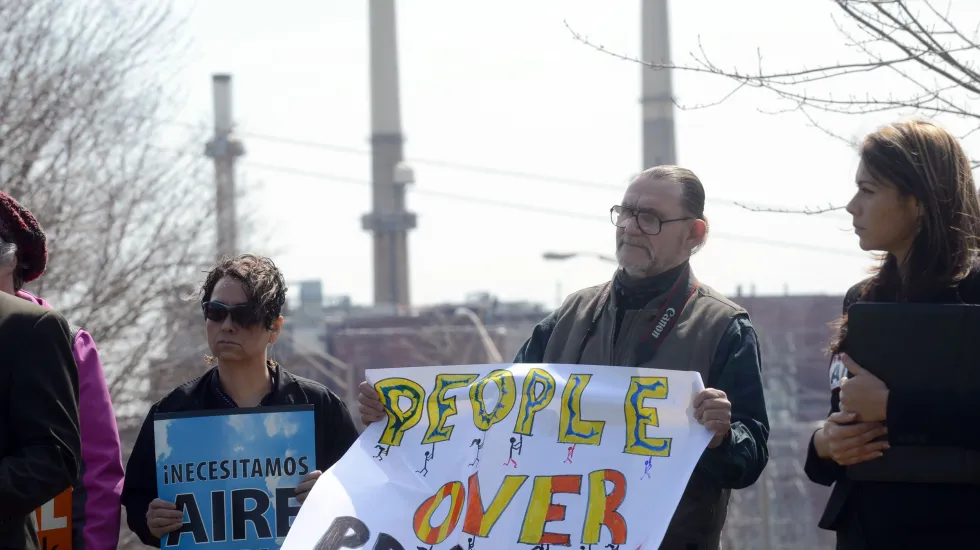The emissions they spew into the air are a leading cause of death, illness and climate change.
For now, though, the new law hasn’t slowed the plants at all. Last year, Illinois’ coal-burning power plants burned more coal than the year before, stepping up production by 39% — the biggest percentage increase among the top 10 coal-burning states, according to federal data.
Faced with the coming deadline that will require most of them to shut down, nine of the state’s 13 coal-burning electric plants boosted production in 2021.
Among them, in the Chicago area, is the coal-fired plant in Romeoville owned by NRG Energy. Slated to be closed even sooner — in June — after six decades in operation, it more than doubled production last year.
Another plant owned by NRG, the Powerton coal plant near Peoria, more than tripled its output last year.
The increase in the use of coal in Illinois to power the electric grid, which reversed a years-long decline, came as demand for electricity went up following pandemic-related lockdowns. Coal also benefited from high prices for another energy source, natural gas.
The boost in coal-burning last year troubles some health and environmental advocates, a group that worked for years to force coal emissions to be reduced and succeeded in getting the phase-out of coal in the broader clean-energy law signed by Gov. J.B. Pritzker last year.
It’s “frustrating,” says Brian Urbaszewski, director of environmental health programs at Chicago’s Respiratory Health Association. “The more coal you burn, the more people are going to get sick and more people are going to die.

“It’s almost like a dead-cat bounce,” Urbaszewski says of the increases last year. “All of those [plants] will be shut down. It’s a last gasp for coal. They’re going to run them as long as they can.”
Last year’s surge followed more than a decade in which Illinois steadily cut back on coal.
Even with last year’s leap, though, coal plants haven’t returned to their production levels of 2019.
The long-term trend shows progress, says Eric Gimon, a senior fellow with Energy Innovation, a think tank in San Francisco, who studies the economics of coal plants.
Gimon says it “isn’t a resurgence in coal. It’s recovered a bit from the dip. But it’s actually not back to where it was before.”
Studies have linked harmful gases emitted by coal plants — carbon dioxide, nitrogen oxide and sulfur dioxide — to increases in deaths, heart attacks, emergency hospital visits for asthma attacks, hospital admissions and other health risks.
“It’s precisely why we need to ramp up renewables big time,” Urbaszewski says, referring to “clean,” renewable energy sources such as wind and solar power.
NRG Energy is closing the Romeoville site, called the Will County Generating Station, and an older coal plant in Waukegan in June.
Citing the proximity of the Waukegan plant to tens of thousands of people, community activists began calling a decade ago for the plant to be shut down.
It wasn’t the complaints, though, that led it to be closed. NRG said last year it was no longer economical to compete with subsidized energy sources such as wind, solar and nuclear power as well as natural gas.
Last year, the Waukegan plant was left idle, not producing any electricity, records show. Basically, it sat ready to operate if demand warranted.

The Powerton plant, southwest of Peoria, is scheduled to close by 2028, an NRG spokesman says.
The new energy law gives additional subsidies to Illinois’ nuclear power plants, promotes the growth of renewable energy sources and phases out all but two coal plants in the next eight years.
Those two — both municipally owned — were spared from the 2030 deadline. They are the Dallman station in Springfield and Prairie State in southern Illinois, which is the state’s largest coal-fired generator. Those plants must shut down by 2045 or cut carbon dioxide emissions to zero. Their operators will have to reduce carbon emissions by 45% by 2035.
Prairie State generated nearly one-third of the power produced by all Illinois coal plants last year. Opening in 2012 in a partnership between coal company Peabody Energy and dozens of municipally owned utilities, including those in Naperville and Batavia, it was one of the last big coal-fired power plants built in the United States.
Dallman has two generating units. The older one, which began operating in 1978, is set to shut down by the end of 2023. The other, which has been running since 2009, will continue to operate.
The reprieve given to Prairie State and Dallman from the 2030 deadline came after a months-long fight in Springfield in which legislators representing communities that had invested in the plants threatened to scuttle the entire energy bill.
The exception for the two plants disappointed environmental advocates. But the new law was still hailed as one of the most comprehensive clean-energy measures enacted in the country last year. It aims to get Illinois to 100% carbon-free electricity by 2050 and provides increases in state funding for renewable energy.
“As of today, Illinois is a force for good, for an environmental future we can be proud of,” Pritzker said when he signed the law last September, calling it “the most significant step Illinois has taken in a generation toward a reliable, renewable, affordable and clean energy future in a generation.”

Even before the law was enacted, companies were closing coal plants, citing business reasons.
Vistra Corp., which is based in Texas, said in September 2020 it planned to shut down its five coal plants in southern and central Illinois. Two will be closed this year. The others will end operations by 2027.
One of the plants closing this year, the Edwards plant near Peoria, is being closed as part of a settlement with health and environmental groups that sued the company for violating state air pollution limits hundreds of times over a number of years. Edwards reported a decrease of more than 10% last year in power generation.
Vistra became a major player in Illinois in 2018 when it bought Dynegy. Soon after, Vistra closed four of the Illinois coal power plants it had acquired, including one in the central Illinois town of Coffeen that had advanced pollution controls. At the time, Vistra blamed the state’s air pollution limits.
Asked about last year’s production increases at four of Vistra’s five coal plants, a company spokeswoman says a rise in natural gas prices “was a big driver, as was the economic recovery from COVID-19, which led to increased demand.”
The increased demand at the company’s coal plants didn’t affect the timetable for shutting the coal operations.
Nuclear power is Illinois’ leading electricity source, accounting for more than half of electric generation last year. The state’s six nuclear power plants have benefited from two state bailouts that force electric customers to subsidize the decades-old facilities.
Coal was the second-leading electricity source last year (24%), followed by natural gas (12%) and wind (10%).
As recently as the 2000s, coal challenged nuclear power as the leading electricity source in Illinois, with coal the leader in 2004 and 2008.
Compared with the 2008 peak, the output of coal-fired power plants was down 55% last year.
Coal has declined as plant owners weighed whether costly retrofits to meet environmental rules made financial sense and as Illinois began to rely more on low-cost wind power imported from neighboring states, including Iowa. Many owners decided to shut down their oldest and least-efficient plants, leading to the closing of all or parts of 23 coal-fired power plants statewide since 2007.

The closing of coal plants, which once were the leading source of carbon dioxide emissions in Illinois, has seen power plants drop below transportation — trucks, cars and planes — as the top contributor to harmful gas emissions.
The dependence on nuclear power makes Illinois stand out compared with the rest of the country. With six nuclear plants, Illinois has more than any other state. The country relies less on nuclear energy overall and more on natural gas than Illinois does.
The national decline in coal use has followed similar trend as what’s been seen in Illinois, with two key differences. Coal was down more in Illinois in 2020 than it was nationally and was up more in Illinois in 2021 than it was across the United States.
Brett Chase’s reporting on the environment and public health is made possible by a grant from The Chicago Community Trust.







